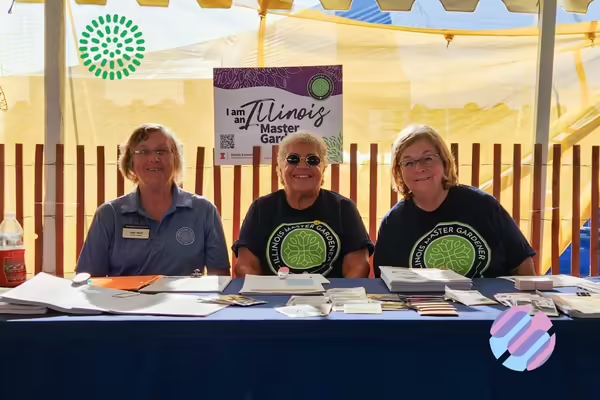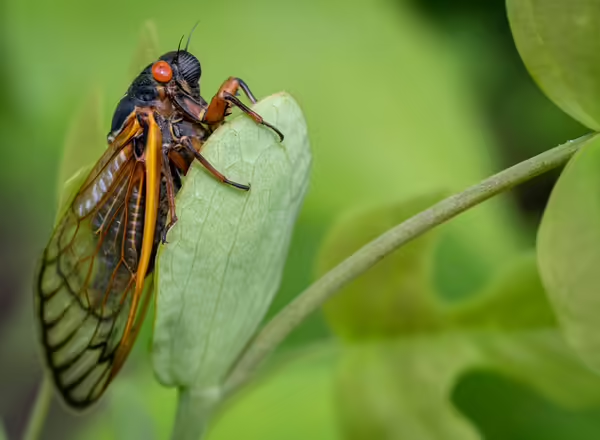
BOURBONNAIS, Ill. — As the Cooperative Extension service across America is poised to celebrate a birthday on May 8th – a day which marks the 111 anniversary of the passing of the Smith-Lever act which established the Extension network – Illinois Extension in Grundy, Kankakee, and Will counties is sharing stories of impact in the community.
When the largest cicada swarm in over 220 years descended on the state, Illinois Extension stood poised to answer questions.
In 2024, the news throughout Illinois was abuzz with talk of a historically significant cicada boom. Two periodical cicada broods, XIII and XIX, emerged simultaneously. The last time this happened was in 1803. The next time it happens is 2245.
As talk of this swarm made mainstream news, people had questions. Residents, experts, and the media alike all turned to Illinois Extension for research-based, reliable information they could trust to inform decisions and waylay fears.
They were met with the expert advice of Illinois Extension's Master Gardeners and Horticulture Educator Nancy Kuhajda, who personally helped address hundreds of questions.
What follows are just a few questions and answers that were provided.
Q: Can you spray something to kill the cicadas underground?
A: No, there are no recommendations to kill cicadas below or above ground. They are only a nuisance insect. Any pesticide treatment would do more harm to the environment, and it is not appropriate.
Q: Has Illinois Extension published a proposal on how homeowners can protect their trees from the oncoming locusts this Spring, and perhaps approved commercial businesses that will spray trees for homeowners?
A: For trees during the periodical cicada emergence this spring/summer, there is no application of anything recommended at all. Most trees will not need any extra care.
But if you have young fruit trees, cover them with a small gauge netting – some people purchase netting from fabric stores because it is inexpensive. The recommendation is to cover the trees when emergence begins and then remove the cover when they are gone within three to five weeks.
We recommend this covering because the only real damage that cicadas do is when the female lays her eggs. As she lays her eggs, she makes slits with her ovipositor (egg tube) in the ends of branches. Sometimes these slits will weaken the end of branches, and they may break off. It is only significant for fruit trees because of the spur-bearing branches.
I’ve included a link below with more information on this year’s cicada emergence.
Q: If homeowners purchase a sprayer to spray their own trees, what should they be sprayed with? Vinegar?
A: University of Illinois Extension only recommends materials specifically licensed for legal tree application. Home-made solutions are not recommended.
In this case, vinegar can be very burning as it is a mild acid and can damage the foliage. Please let me know if you have any further gardening questions. I am happy to help!
Q: We have a few trees that are only about three years old. We’re hearing that some people are covering their young trees with netting to keep the cicadas off of them. Is this something that you think we should be doing?
A: Thanks for reaching out! These trees should be fine. If they were small whips, I would have you cover them. In this size, the only thing that could happen is, if it is hot and dry in the late summer when the female lays her eggs (and she does at the tips of the branches), you might see some tips break off, but it will not harm the health of the tree.
Young fruit trees are our biggest concern because of the spurs (short branches on which the fruit is borne). If she damages those on a young tree, it would slow production later on.
Providing answers for all of life’s problems.
Illinois Extension provides answers for a variety of life’s challenges and stands as a resource for residents and organizations to refer questions to so they can answered by one of Illinois' largest network of experts.
Local, first. That's Extension.
Illinois Extension’s staff has been embedded across the state’s 102 counties for more than 100 years, translating university research, delivering over 28,000 annual educational programs with over 800,000 program attendees, and offering training and services that positively impact the lives of adults and youths.
To learn more about local impact in Grundy, Kankakee, and Will Counites, read Illinois Extension's local impact report. To give directly to Extension and impact local programs, give online.
Read more & support Extension's work in your local community
University of Illinois Extension develops educational programs, extends knowledge, and builds partnerships to support people, communities, and their environments as part of the state's land-grant institution. Extension serves as the leading public outreach effort for University of Illinois Urbana-Champaign and the College of Agricultural, Consumer and Environmental Sciences in all 102 Illinois counties through a network of 27 multi-county units and over 700 staff statewide. Extension’s mission is responsive to eight strategic priorities — community, economy, environment, food and agriculture, health, partnerships, technology and discovery, and workforce excellence — that are served through six program areas — 4-H youth development, agriculture and agribusiness, community and economic development, family and consumer science, integrated health disparities, and natural resources, environment, and energy.
